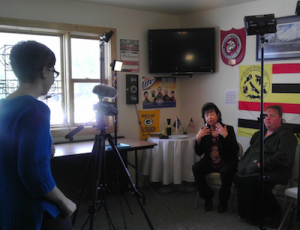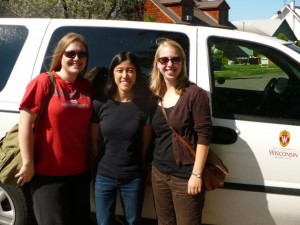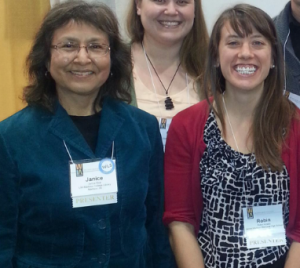Greetings from the start of another semester of the TLAM course — the sixth time the course is being offered in SLIS at UW-Madison. We have an exciting year ahead of us with a great group of students!

We’ll be continuing our three service-learning projects with Red Cliff, the Oneida Nation,and the Ho-Chunk Nation. We’ll also be working with the College of Menominee Nation after having LIS student internships there this past summer. We’ll be taking field trips to the Chazen Art Museum, the Wisconsin Historical Society Museum, and the Menominee Nation and Stockbridge-Munsee communities.
To start off the course, our first meeting is dedicated to introductions and history. We begin by going around the table and sharing information about ourselves. This year, we are lucky to have one PhD student in Linguistics, one undergraduate in Philosophy, and eight SLIS students: three concentrating in archives, two in youth services, and three in academic libraries. One has worked at the College of Menominee Nation. Another has taken Ojibwe language classes. Several mentioned that they’re looking forward to “everything” about the TLAM class. For most, this is their first time working with and learning about Native communities.

We follow introductions with the history of the TLAM Project. Omar Poler, who has lived most of the history of the TLAM Project, helped us provide context for students about the grassroots beginning of the course to a project that has multiple parts, including: the Convening Culture Keepers mini-conferences; the TLAM Student Group; and most recently, the Convening Great Lakes Culture Keepers Institute.
Then, former TLAMers spoke about the previous work students completed on the service-learning projects that are continuing this semester: Louise Robbins, former SLIS Director and professor who first supported the idea of TLAM, described the Red Cliff capital campaign project; Lotus Norton-Wilsa and Jordan Radke, two SLIS students, explained their work with the Oneida Nation film preservation project; and Katelyn Martens, another SLIS student, spoke about the Ho-Chunk Learning Center project.
What we continue to be amazed by is how a true explanation of TLAM is a group effort. Besides Janice, the 10 students, and me, we were joined by the group of individuals above who have dedicated a part of their lives to the TLAM Project. Without each other, and all our project partners, it would be much harder to keep TLAM alive. And now, we have 10 more students who are making TLAM history!

Check back in each week to hear from the students reporting on what we’re reading, who’s visiting our class, how our community projects are progressing, and what events we’re attending around campus. And if you’re interested, check the TLAM Class page for a copy of our syllabus.
-Robin Amado and Janice Rice, Co-Instructors of TLAM ’14
